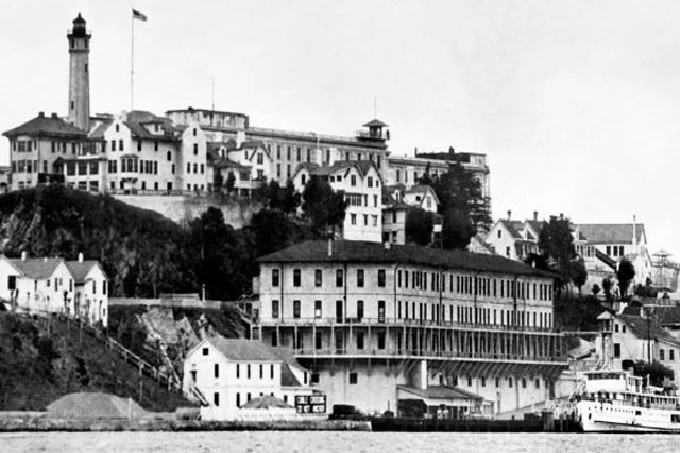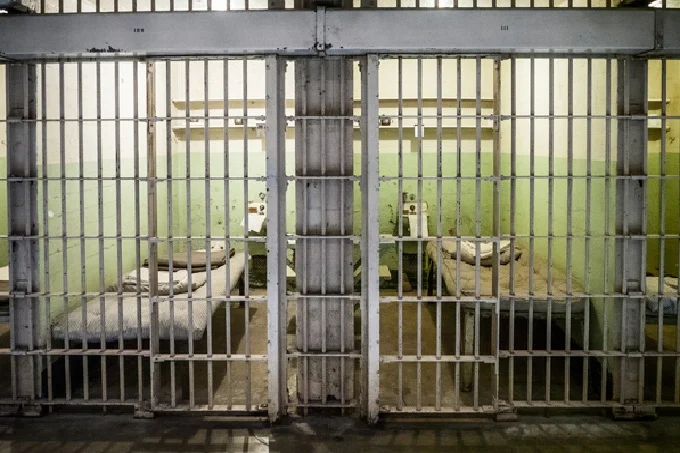Why did Alcatraz close and why do criminals call it hell on earth

The old Alcatraz prison structure now houses a museum, the setting, and mood of which harkens back to the days when the mere mention of this ominous location filled convicts with dread.
The argument wasn’t even that escaping from Alcatraz was difficult since the island where the prison is situated is encircled on all sides by ocean. Attempts to escape the island, on the other hand, were attempted multiple times, but only one of them was successful.
How it all started
Originally, Alcatraz was the citadel of the same-named fort, with partly walled military barracks on the grounds. In 1859, the main structure was constructed on their foundation. It served as a military jail for more than half a century, housing deserters, disciplinary offenders, and war criminals. The jail was already well-known at the time for its severe incarceration conditions and prisoners’ tireless labor.
The current structure was constructed between 1910 and 1912. During the building, several existing fortress structures were utilized, including staircases, durable granite blocks that had previously been used to put artillery pieces, and old stones that supported new concrete walls. Alcatraz’s aspect remained bleak, and the island had already achieved infamy at the time.
Alcatraz was passed to the Federal Bureau of Prisons after another two decades, and its structures were extensively modernized. All kinds of Mafiosi, gangsters, and other criminals felt at peace back then. They didn’t even try to disguise the fact that they bribed government officials and law enforcement authorities.
The authorities desperately wanted a jail facility with a name that would scare offenders. Indeed, mafia leaders felt too at ease in regular prisons: their upkeep was well paid, and they were housed in cells that looked like they belonged in a five-star hotel.

The old military jail on the island may easily be converted into such a facility if the right circumstances are in place. Alcatraz earned the moniker “prison of prisons” almost immediately, and it started to admit the most heinous prisoners with several convictions. In jail, the most stringent laws and a specifically designed work system were implemented for them.
Prison of prisons
The culprits did not arrive from the courtroom in any way. Those who continued their illegal activities and attempted to create their own laws in other institutions were usually sent to Alcatraz, although there were exceptions, and brutal gangsters or other malevolent offenders were sent to this jail soon after their imprisonment. In August 1934, the first group of 137 inmates arrived. For a long time, they included well-known bank robbers, murders, and counterfeiters.
Everything here shouted that getting off the island was almost impossible. All cells had very strong steel bars, weapons galleries were positioned above the cells, inmates were counted up to fifteen times a day, motion sensors were put around the facility, and tear gas canisters were kept in the dining area that could be launched remotely.
Any brawl, fight, or effort at mass disobedience could be put down in a matter of minutes. At the same time, snipers were stationed in the turrets above each building, checking doors and gratings on a regular basis. Initially, the inmates were not permitted to speak during meals.
James A. Johnston, the first commander of Alcatraz, established the groundwork for severe circumstances. Despite the fact that he was the one who instituted stringent restrictions, the inmates regarded him with reverence.
A unique daily routine was devised under his direction. Inmates at the jail had to wake up at half-past six a.m. to clean their cells and perform hygiene routines in less than half an hour.
Everyone was expected to be standing at the cell bars at five minutes to seven. If everyone arrived on time for the roll call, the cell doors would open, and the convicts would be taken to breakfast. A meal lasted precisely 20 minutes, regardless matter whether it was breakfast, lunch, or supper.
In Alcatraz, Johnston implemented a “policy of quiet,” which included utter stillness for many hours at a time.
The director determined the length of time, who selected when the convicts would be allowed to speak and when they would be forced to shut up. If the water did not ruffle during moments of quiet, the noises of the city may be heard from the coast. They were the last straw for others, making their time on the “devil’s island” miserable.
Some went insane, while others attempted suicide. Only individuals who had earned this privilege via good conduct or hard effort were permitted to send letters to their families.
The possibility of being sent to an isolation unit, which is reserved for offenders who have broken the rules, horrified the detainees. The cold, bad food, lack of light, and full isolation were all too much to handle.
On the other hand, the whole jail system was not designed to re-educate offenders in any way. It was required to “break” them, to deprive them of their willpower. The inmates were given numbers rather than names.
A memorial to a bleak period in history
Prisoners were constantly pushed to do mad actions due to the terrible circumstances of their confinement. A riot known as the “Battle of Alcatraz” erupted at Alcatraz in 1946. Six individuals kidnapped and murdered two guards and asked that they be given a boat to travel to the ocean.
Three of the insurgents were killed by Marines who intervened in the riot’s suppression; two were condemned to death, and one was sentenced to a second life term. In addition, the struggle injured 17 additional guards and a prisoner.
In 1962, however, one of the escape attempts was successful. The four crooks discovered Alcatraz’s weak spot – an unprotected passage in Block B with an adjacent ventilation system – and used an ordinary metal spoon strengthened with silver dimes and a makeshift drill manufactured from a vacuum cleaner motor to cut through the concrete.
They concealed the hole with false models and exploited the time of the musical hour, when accordions were played over the loudspeaker, for business. To get away from the available options, a raft was built. Only three of the four offenders planning to flee were successful; one was unable to exit the cell in time and was incarcerated.
The FBI investigators investigating the escape stated that the fugitives died on their route to the coast. However, circumstantial evidence showed that two of the fugitives, John and Clarence Anglin, were able to reach Brazil as early as 2010.
Alcatraz was closed in 1963. It now contains a museum, which is one of San Francisco’s most popular tourist attractions. It is visited by around 1.5 million visitors each year, ensuring that its reputation as one of the world’s most ominous and impenetrable prisons is well-deserved.





